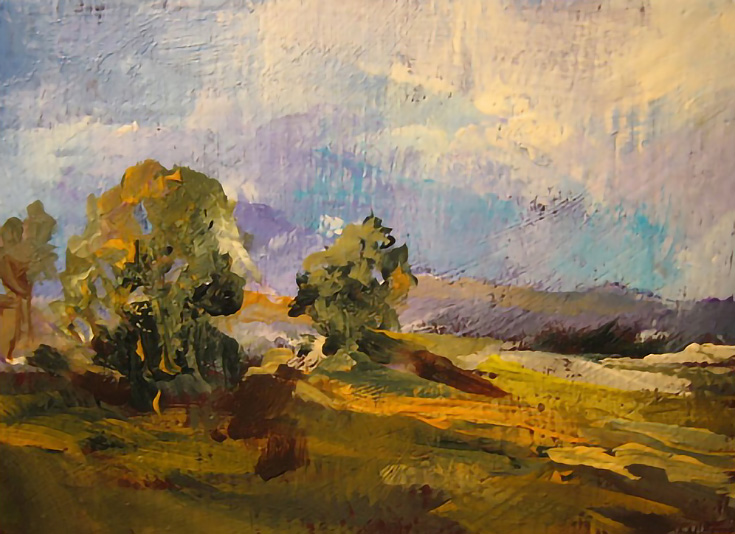Over the past 18 months, I have devoted a lot of my painting time to the creation of Pocket Art. (“Pocket Art” refers to paintings with dimensions of 2.5 x 3.5 inches.)
Painting in such a small format can be challenging, but it is always rewarding. Here are the two most popular types of Pocket Art around today:
What are ATCs? (Artist Trading Cards)
Artist Trading Cards are small playing-card-sized works of art that are meant to be traded with other artists. During the Impressionist Age, artists traded art cards among themselves to study each others’ styles and techniques. They also traded or sold art cards for supplies, food, and lodging.
Among certain art and crafts movements, ATCs are about exchanging art without exchanging money, and without interference from the business side of the art world. Artists can trade their cards in face-to-face trading sessions as well as via mail.
What are ACEOs? (Art Cards Editions and Originals)
While some artists were happily trading cards for free, another group of artists realized there was a market for these miniature artworks and quickly made their cards available for sale at remarkably low prices.
Art Cards Editions and Original, or ACEOs for short, debuted and quickly became a worldwide success.
Cards are sold either as originals or editions. If it’s a print it should say so, and it should be numbered and signed—usually on the back.
The largest venue for buying and selling ACEOs, by the way, is eBay.
Basic ACEO guidelines
- The size of an ACEO should be 2.5 x 3.5 inches. This standard size is widely recognized by collectors. Any sizes larger or smaller would not qualify as ACEOs.
- All work must adhere to basic Copyright Law. This was very important to the founding artists, who understood the importance of respecting and acknowledging original work.
- There are no other rules. Artists have complete freedom in making creative decisions, such as the subject of the ACEO, or the materials used in its creation.
Artists from all over the world are creating, and now selling, these little gems in different mediums and on different subjects.
Supply stores are beginning to stock specialized materials that help artists create and showcase them. Perhaps most significantly, art critics are beginning to take notice of these small yet exquisite works of art.
If you want to try your hand at collecting or making Pocket Art, you should know that it’s highly addictive.
As an artist, I find that I can experiment with different art forms, use ACEOs as studies for larger works, and afford to use better quality materials since the dimensions are so small.
I also get instant feedback from my eBay auctions, increase patronage of my art in general, and meet great folks from around the world.
For me, it’s been a great journey, and I invite all of you to give it a try!
For more information on Kathleen Harrington’s pocket art and traditional artwork, please visit her website at KathleenHarrington.com.
This post may contain affiliate links.


